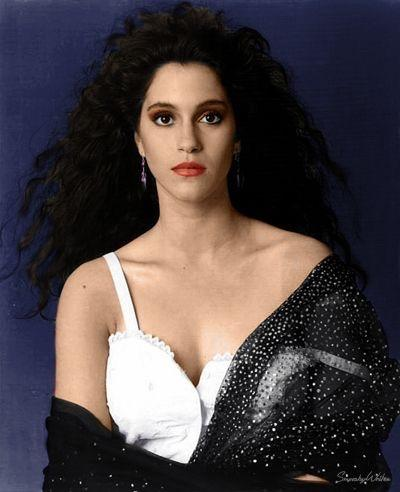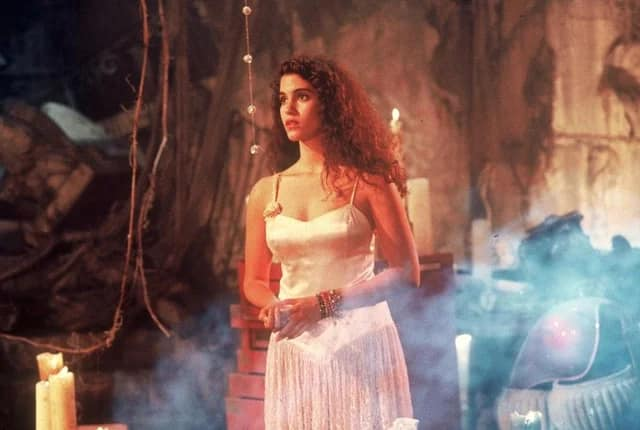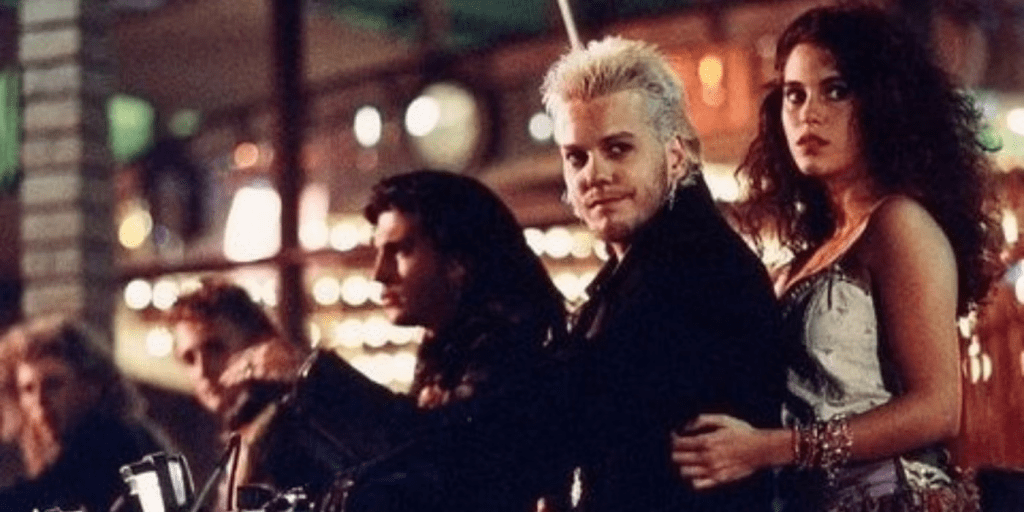
In the heart of 1980s pop culture, a new wave of cinematic icons began to emerge. Among them was Jami Gertz, a fresh-faced, talented actress who had already built a steady resume with roles in Square Pegs and Sixteen Candles. But it was in 1987 that her career took a massive leap with the cult-classic horror-comedy The Lost Boys.
Directed by Joel Schumacher, The Lost Boys was a stylish, edgy, and wildly original take on vampire mythology. Set in the fictional town of Santa Carla, California, it followed two brothers caught in a deadly subculture of teenage vampires. While the film boasted a powerful ensemble—including Kiefer Sutherland and Jason Patric—Gertz stood out for her compelling and nuanced performance as Star, the mysterious and alluring half-vampire who becomes a central figure in the story’s emotional core.
Video: The Lost Boys (1/10) Movie CLIP – I Still Believe (1987)
Jami Gertz’s character, Star, is much more than a love interest or background player. She is torn between two worlds—the dark allure of the vampire coven and the human innocence she desperately clings to. Gertz infused the role with a softness and emotional vulnerability that contrasted the film’s gritty aesthetic.
Her eyes conveyed fear, sadness, and yearning with a natural elegance. She brought quiet strength to a role that might have been overshadowed in lesser hands. Audiences connected with her portrayal of a character caught in a moral limbo. Her chemistry with Jason Patric’s character, Michael, was electric but grounded, helping to humanize the supernatural elements of the film.

Beyond performance, Gertz’s presence in The Lost Boys became an aesthetic anchor for the film. From her flowing bohemian wardrobe to her windswept curls and wide-eyed mystique, she personified the 1980s’ darker, more romantic side of fantasy. The film’s art direction, coupled with Gertz’s natural charisma, helped elevate The Lost Boys into a visual and emotional experience that fans would revisit for decades.
Her portrayal of Star added balance to a testosterone-heavy cast, providing a necessary counterpoint that enhanced the narrative without falling into tropes. She wasn’t a damsel in distress—she was a survivor, a character battling her own transformation while trying to save others.

While The Lost Boys initially received mixed reviews, it quickly became a cult phenomenon. Over time, critics and audiences alike came to appreciate its unique tone, stylized visuals, and iconic soundtrack. Gertz’s role became a fan favorite, and her image as Star graced posters, fan art, and Halloween costumes for years to come.
Her performance was a standout in a film now considered a genre-defining moment in vampire cinema. In a decade filled with horror films, The Lost Boys offered something different—and Jami Gertz was at the heart of it.

Following the success of The Lost Boys, Jami Gertz continued to build a versatile film and television career. She went on to star in Less Than Zero alongside Robert Downey Jr., and later made a mark in comedies like Twister and TV series like Still Standing. Yet for many, her role in The Lost Boys remains a defining moment.
The film helped transition Gertz from teen roles to more sophisticated, emotionally layered characters. It gave her the opportunity to showcase range and depth, and to break out of the mold of stereotypical 1980s female leads.
Video: The Lost Boys • Cry Little Sister • Gerard McMahon
Decades later, The Lost Boys remains a touchstone of vampire and teen cinema, regularly cited as one of the best horror films of the 1980s. Its impact has rippled through television, literature, and fashion. Jami Gertz’s portrayal of Star continues to resonate with audiences who see her as the soul of the film.
Gertz’s role endures not just because of nostalgia, but because of the humanity she brought to a genre often dominated by spectacle. She helped redefine what a female role in a supernatural thriller could be—empathetic, courageous, and layered.

Jami Gertz’s performance in The Lost Boys was more than a memorable character—it was a cultural landmark. It introduced her to a global audience, proved her depth as an actress, and contributed significantly to a film that would go on to define a genre.
Her work in this role laid the foundation for a career built on substance, style, and enduring appeal. For fans of 1980s cinema, she remains a beloved figure. And for those discovering the film for the first time today, Gertz’s Star continues to shine just as brightly.


